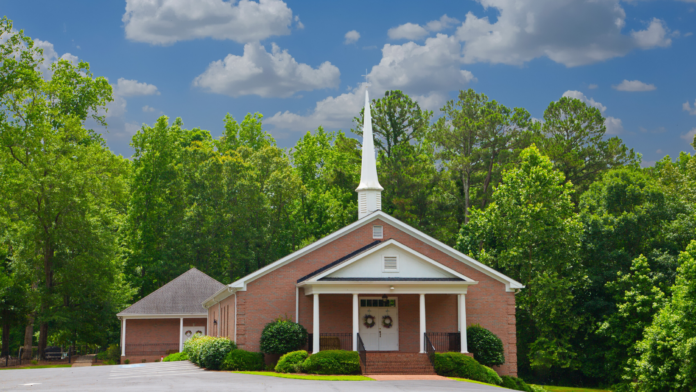Fifteen years ago, I wondered if mid-size churches might go extinct. Would they dwindle as people transferred into megachurches and planted new churches? The mid-size church is still here, and I’m glad I did not publish my thoughts. Now, they have several growth advantages in North America.
What is a mid-size church?
An exact definition does not exist, but most experts will use average worship attendance figures as the primary consideration. Karl Vaters offers this breakdown in his book, The Grasshopper Myth.
- House Church: Less than 25 (and meeting in a house)
- Small Church: 25 to 200 (or under 25 meeting in a church building)
- Mid-Size Church: 200 to 350
- Big Church: 350 to 2,000
- Megachurch: Over 2,000
In a previous Church Answers article, my father, Thom Rainer, gave a slightly different breakdown of church sizes.
- Under 50 in attendance: smaller churches
- 51 to 99: mid-size churches
- 100 to 249: large churches
- 250 and above: larger churches
In a survey by Chad Brooks, he uncovers a wide view of how people perceive church size.
- Small churches can be anywhere from 0 to 250
- Medium churches can be between 30 to 1000
- Large churches could have anywhere from 75 to 10,000
Why the differences between each of these categorizations?
- Brooks uses perception as the primary guideline.
- Rainer uses statistics as the primary guideline.
- Vaters uses a combination of statistics and people’s perceptions.
All are valid ways of defining a mid-size church, and there are other considerations beyond mere size. For the sake of brevity, I’ll define a mid-size church in this way: A mid-size church is between 150 and 300 people on at least 3 to 7 acres with a campus large enough to accommodate everyone. These churches have an annual budget between $200,000 and $750,000.
I will concede my definition is more narrow than it is broad. It’s intentional, as I want to cover the distinct advantages of these churches. It’s also worth noting that the median church size in North America is around 65 average weekly attendees. For many, a mid-size church of 250 people would feel large.
What are the advantages of a mid-size church?
Mid-size churches are gaining in desirability among younger generations. As I wrote previously, the megachurch movement is waning with the aging Baby Boomer generation. Around 2010, at the same time I was wondering if mid-size churches would survive the megachurch phenomenon, the number of megachurches stalled. In 2010, the movement reached an inflection point with about 1,600 megachurches in the United States. Over the next ten years, up to the pandemic of 2020, the number of megachurches dropped to about 1,200. Today, the number is even less, perhaps below 1,000.
What is happening? The megachurch movement was a Baby Boomer phenomenon. They grew as Boomers came of age and transferred from smaller and mid-size churches in the 1980s, 1990s, and early 2000s. Many of these megachurches are still large, but they are much older in average age. Younger generations value proximity more than size. Millennials are the least mobile generation since the 1940s. They stay put in their neighborhoods and prefer not to drive long distances to work or the big regional church across town.
Mid-size church campuses are large enough to accommodate growth but small enough not to be overcome by deferred maintenance.
I met with a megachurch pastor a while back to discuss the future. His church had done well and was seeking the next steps.
“So, what’s next?” I asked.
“Carpet,” he replied. “We need to spend $1 million on the hallways.”
Once you get beyond 50,000 square feet, the campus can quickly become an albatross without regular—and expensive—maintenance. Growing churches with small facilities lament the lack of space. Large churches lament the costs of updating their sprawling campuses. Mid-size churches have the advantage of being a sweet spot: large enough for growth but small enough not to be consumed by the square footage.
Mid-size churches have enough people to build momentum with full programming for all ages.
A family visits your church on a random Sunday. They are new to the community. Mom has experience singing in the choir and wants more information about the worship ministry. Dad would like to connect with a small group. They have three children: one in elementary school, one in middle school, and one in high school. A mid-size church has programming for all of them, something most small churches cannot offer. Additionally, this family can talk with the lead pastor after the worship service about each of these ministries, something not likely to happen in a megachurch.
Mid-size churches typically have enough funds to afford multiple staff members.
Many small churches can only afford part-time pay (but we all know it’s full-time hours). Large churches often employ specialists to lead each ministry. When finances tighten, they must lay off staff. Mid-size churches can have enough staff to relieve the burden of the lead pastor without becoming so large you need a human resource department to manage employees. A church of 250 with a $500,000 budget can often afford three full-time staff, helping share the load. At this level, the lead pastor does not need to drop everything to address every urgent need.
Mid-size churches with good children’s programs are appealing to Millennials.
It’s challenging to grow a church without quality children’s programming. Though mid-size churches will not have all the bells and whistles of a megachurch, they can have programming and facilities that appeal to Millennial parents. The mid-size church has the advantage of connecting personally while also offering quality programs for children.
Mid-size churches can focus on the immediate neighborhood in ways a large, regional church cannot.
Big regional churches are, by design, broad in scope. These churches want to appeal to a large group of people and do not play favorites with specific schools, sports leagues, and civic organizations. A mid-size church in a neighborhood can focus on the high school next door or the park system right down the road. While large churches have greater reach in the region, mid-size churches often have greater impact in their neighborhoods.
Small churches, large churches, megachurches, house churches, and church plants all have a place in the kingdom of God. However, mid-size churches today have some distinct advantages in North American culture. Are you ready to capture the moment? If you are part of a mid-size church, what do you see where you minister?







